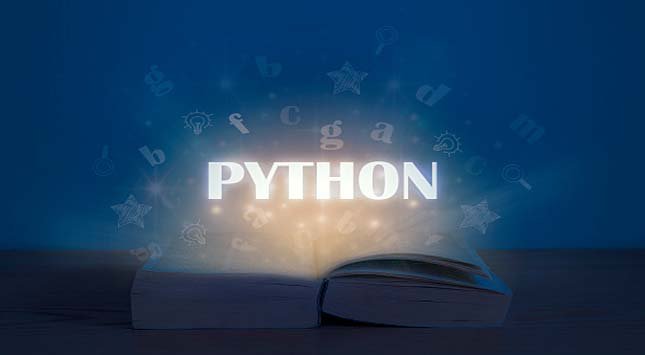OCR (Optical Character Recognition) technology has revolutionized how businesses handle data extraction and document processing.
By converting scanned or printed text into editable and searchable data, OCR solutions enable businesses to automate tedious manual tasks, improve accuracy, and enhance efficiency.
This article will explore the role of OCR technology, its benefits, different types of OCR solutions, and its use cases across various industries.
Role of OCR Technology
OCR technology plays a vital role in transforming unstructured data from physical or digital documents into structured and usable information. It involves the following key functions:
1. Text Recognition
OCR technology uses advanced algorithms to recognize and extract text from images, scanned documents, or PDF files. It can identify individual characters, words, sentences, and complex layouts.
2. Data Extraction
OCR solutions extract relevant data from documents, such as names, addresses, dates, invoice numbers, or product descriptions. This data can be further processed, analyzed, or integrated into other systems.
3. Document Conversion
OCR technology converts physical or scanned documents into editable and searchable digital formats, such as Word documents, Excel spreadsheets, or searchable PDFs.
4. Language Support
OCR solutions support multiple languages, making them versatile for businesses operating in global markets. They can accurately recognize and extract text in different languages, facilitating multilingual document processing.
Benefits of OCR Solutions
OCR solutions offer numerous benefits for businesses across industries:
1. Increased Efficiency
OCR technology automates data extraction and document processing, reducing the need for manual data entry and repetitive tasks. This saves time, improves productivity, and allows employees to focus on more value-added activities.
2. Improved Accuracy
OCR solutions minimize human errors associated with manual data entry. The technology can accurately recognize and extract text, resulting in higher data accuracy and reduced data entry risk.
3. Cost Savings
By automating document processing and data extraction, businesses can significantly reduce operational costs. OCR solutions eliminate the need for manual data entry, storage of physical documents, and associated administrative tasks.
4. Enhanced Data Accessibility
OCR technology converts physical or scanned documents into searchable and editable digital formats. This enables easy retrieval and access to information, improving collaboration and facilitating efficient data management.
5. Integration with Existing Systems
OCR solutions can seamlessly integrate with existing software applications and systems, such as content management systems (CMS), customer relationship management (CRM) systems, or accounting software. This enables data extraction and document processing to seamlessly integrate into existing workflows.
Types of OCR Solutions:
There are different types of OCR solutions available to cater to specific business requirements. Some common types include:
Cloud-Based OCR
Cloud-based OCR solutions operate on remote servers and are accessed via the Internet. These solutions offer scalability, flexibility, and ease of deployment, as businesses can leverage the processing power and storage capabilities of the cloud provider.
Mobile OCR
Mobile OCR solutions are designed for smartphones and tablets, allowing users to capture images of documents using the device’s camera and extract text on the go. This is particularly useful for field personnel or businesses that require document processing on mobile devices.
Intelligent OCR
Intelligent OCR solutions leverage artificial intelligence (AI) and machine learning (ML) algorithms to improve accuracy and automate complex document processing tasks. These solutions can handle unstructured data, adapt to different document layouts, and continuously improve accuracy over time.
Use Cases in Industries:
OCR solutions find applications across various industries, transforming document processing and OCR extraction in the following ways:
1. Banking and Finance:
OCR in banking technology automates the processing of bank statements, invoices, loan applications, and other financial documents. It enables quick data extraction, facilitates compliance with regulations, and streamlines financial processes.
2. Healthcare
OCR solutions assist in digitizing medical records, extracting patient information, and automating claims processing. This improves the accuracy of patient data, enhances healthcare workflows, and enables efficient medical record management.
3. Retail and E-commerce
OCR technology automates data extraction from invoices, purchase orders, and shipping documents. It enables efficient inventory management order processing and improves the overall supply chain efficiency.
4. Legal
OCR solutions automate the extraction of text from legal documents, contracts, and court records. This streamlines legal document management, enables quick search and retrieval of information, and improves legal research processes.
5. Government and Public Sector
OCR technology assists in digitizing government forms and processing passports, IDs, and other identification documents. It improves citizen services, facilitates data integration across government systems, and enhances efficiency in public sector operations.
6. Education
OCR solutions automate data extraction from exam papers, student records, and certificates. This streamlines administrative tasks in educational institutions facilitates data analysis, and improves record management.
Conclusion
In conclusion, OCR solutions have transformed how businesses process documents and extract data. By automating data extraction, improving accuracy, and enhancing efficiency, OCR technology offers significant benefits across industries.
Whether it’s banking, healthcare, retail, legal, government, or education, OCR solutions enable businesses to streamline operations, reduce costs, and improve the accessibility and usability of their data.






